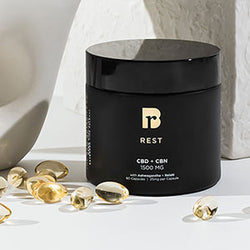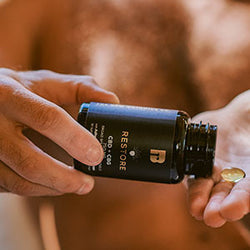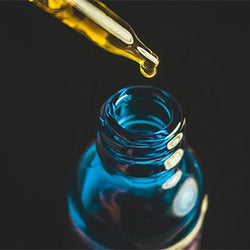
The market for CBD-based products has grown over the last few years at a rate unprecedented in the Natural Products Industry.
The Brightfield Group estimate the European CBD market will grow to be worth $1.7bn in 2023.
Growth has followed an understanding of potential health benefits associated with CBD (cannabidiol) and other phyto-cannabinoid compounds found in the Cannabis Sativa variety of plants.
Extracts are derived from Industrial Hemp, a variety of the Cannabis Sativa plant.
Despite increasing awareness of CBD and other cannabinoids in the UK, Hemp’s association with a sister variety of the Cannabis Sativa plant, marijuana, mean many people are still confused about the legal status of CBD-based products.
So, is CBD, and are other phyto-cannabinoid compounds, legal in the UK?
CBD, in its pure form, is not a controlled substance in the UK.
However, the nature of products made with plant extracts means that, unintentionally, many CBD-based products can contain other compounds found in hemp that are illegal.
The Misuse of Drugs Act 1971 and Misuse of Drugs Regulations 2001 classify the compounds THC, THC-V and CBN, all phyto-cannabinoids found in varying levels in the Hemp plant, as controlled substances.
Home Office guidance [not legal advice] states: ‘For a CBD and other cannabiniod [sic] products to be lawfully available for human consumption it needs to either meet the Exempted Product Criteria in Regulation 2 of the MDR 2001 or the definition of a CBPM in Schedule 2 to the MDR 2001 for its possession to be lawful.’
If a product does have trace amounts of the illegal substances in, it may be exempt and lawfully available for human consumption (Misuse of Drugs Regulations 2001 2.(1)(a)(b)(c)).
To be exempt, the purpose of a CBD-based product must not be to administer the controlled substances. They must also not be easily recoverable from the product.
A CBD-based product is, evidently, designed for the administration of CBD. Although trace amounts of THC or CBN may be detected, such a product is not designed for the administration of those controlled compounds.
As with widely available hemp oil and protein products, CBD extracts are made from Industrial Hemp plants that have naturally low-THC levels. Such plants typically have less than 1% THC levels.
By contrast, Marijuana strains of Cannabis Sativa have higher THC and lower amounts of CBD. They have been developed over time using unfertilised female plants.
It is questionable whether trace levels of THC or CBN in finished products made from Industrial Hemp could be recovered by a consumer using readily applicable means or in yields that would constitute a risk to health.
In practice, expertise is required to remove THC or CBN from the Industrial Hemp feedstock used to make finished products. Expensive and sophisticated equipment is also required.
If a consumer did have access to such equipment, it is uncertain whether extractions of THC or CBN could actually be achieved from a finished product containing only trace amounts of those compounds. Further, if they could, it is uncertain whether any yield of THC or CBN would be at levels that constitute a risk to health.
In addition to these requirements, to be exempt, the amounts of each controlled substance also must not exceed 1 milligram in the finished product.
The widely published figure of 0.2% THC being the legal limit of a product is a myth. This figure relates to the maximum THC content of low-THC Industrial Hemp plants grown in the UK under Home Office licence. It does not relate to exempt levels of THC or CBN in finished products in any way.
The complexities of the law and the lack of clear guidance create difficulties for consumers and for the industry.
Mis-readings of rules by some bad actors, through ignorance or for convenience, undermines the efforts of many good players in the industry.
Those that are focused on producing high-quality and reliable products that may help support people’s health, within the law, are frustrated.
In the absence on clear guidelines, Trade Associations like the Cannabis Professionals, Cannabis Trade Association and the European Industrial Hemp Association have, for a long time, helped the Industry self-regulate, with consumer protection central to guidance.
Awareness of standards and Consumer education have also helped expose bad players. Quality assurance initiatives, such as the CMC’s Kite Mark and TrustCanna schemes, might also have a part to play in future.
It’s worth asking for Certificates of Analysis to ensure THC and CBN levels are below 1 milligram, and also to ensure the CBD content is what it should be.
IMPORTANT NOTE
All information, content or linked materials in this article and on this website is for discussion only and is not medical or legal advice and must not be relied on as such. The information is not a substitute for professional medical expertise. Please see our full Disclaimer and Terms of Service for full details.







